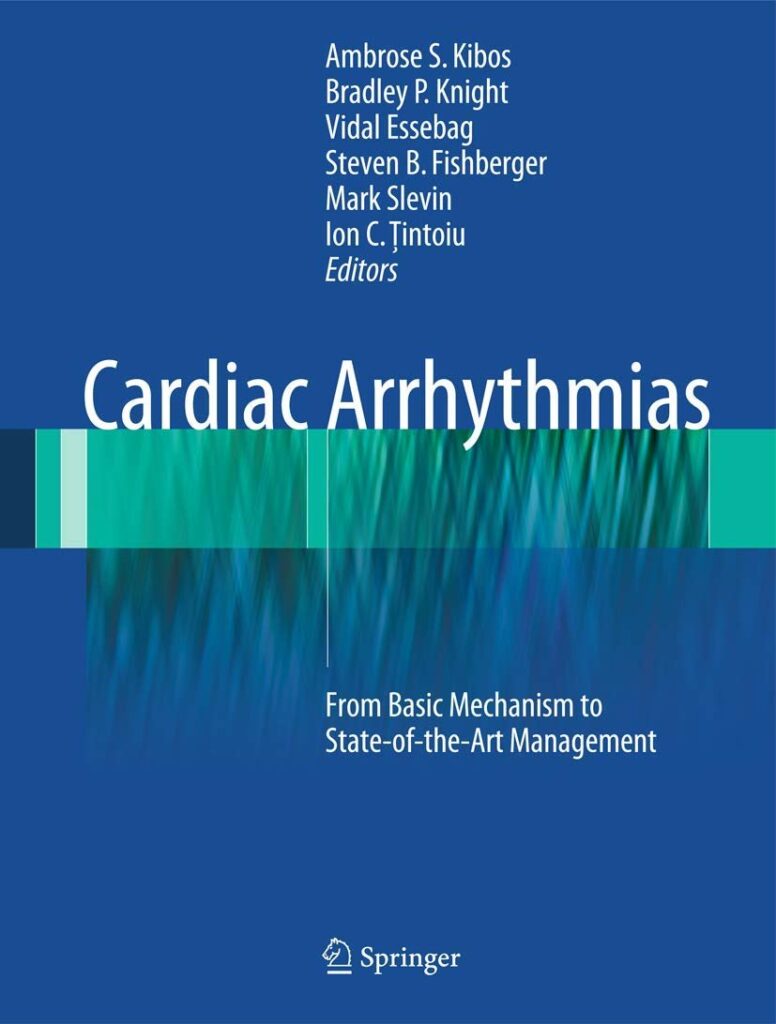Cardiac Arrhythmias: From Basic Mechanism to State-of-the-Art Management

This Cardiac Arrhythmia blogpost is a little different from the normal posts on this blog because we are reviewing a medical book as opposed to a novel. The reason for this is because cardiac arrhythmia is such an important topic. I felt it necessary to spead some awareness on its effect in today’s world and its history.
Introduction
“Cardiac Arrhythmias: From Basic Mechanism to State-of-the-Art Management” compiled by Ambrose S. Kibos along with colleagues, presents an exhaustive examination of cardiac rhythm irregularities. This text is particularly pertinent for grasping ailments such as rapid heartbeat, slow heartbeat, and the Adams-Stokes phenomenon, all of which can have profound health consequences.
Overview of Content
Fundamentals of Cardiac arrhythmias: In the initial chapters, the reader is introduced to the fundamental principles underlying cardiac arrhythmias. The book explains the consequences of disturbances in cardiac electrical conduction, leading to scenarios where the heart may either race (called tachycardia) or lag (called bradycardia). Such groundwork is important for comprehending heart disorders like the Adams-Stokes phenomenon, characterized by severe fluctuations in heart rate that hinder cardiac performance.
Symptomatic Expressions: The text offers an in-depth portrayal of the symptomatic expressions linked to various dysrhythmias. It lays out on how the Adams-Stokes phenomenon can bring about conditions such as vertigo, syncope, and seizures, originating from low oxygen to the brain. These insights are crucial for the prompt recognition and diagnosis of these disorders.
Strategies for Diagnosis and Intervention: A great feature of this publication is its detailed strategy for the diagnosis and intervention of dysrhythmias. It covers many diagnostic modalities, including electrocardiography (ECGs), and offers several treatment methods both medicinal and non-medicinal. The discussion extends to cutting-edge interventions like catheter ablation and the deployment of implantable defibrillators. This book is valuable to both patients and doctors.
In-Depth Examination of Adams-Stokes Phenomenon: “Cardiac Arrhythmias” covers the historical beginning of the Adams-Stokes phenomenon finding, tracing its initial documentation back to the 19th century by the hands of Robert Adams and William Stokes. The text focuses how this syndrome stems from extreme cases of slow or rapid cardiac rhythms. This results in abrupt episodes of unconsciousness and other critical symptoms due to insufficient cerebral perfusion.
Significance and Practicality: The publication stands as an valuable tool for an extensive demographic. This includes medical practitioners, scholars in the medical field, and individuals seeking health information. With great narratives and actionable knowledge, it makes sophisticated medical theories easier to understand. It serves as a beacon for physicians in pursuit of contemporary therapeutic protocols or for patients looking to grasp their medical conditions. It offers a wealth of pertinent data.
Epilogue: “Cardiac Arrhythmias: From Basic Mechanism to State-of-the-Art Management” is an absolute must-have resource for those fascinated by cardiac rhythm maladies. It explains in detail afflictions such as rapid or slow cardiac rhythms and the Adams-Stokes phenomenon, positioning itself as an essential read for those eager to increase their knowledge in this domain. I highly recommend it to my audience. The topic of Cardiac Arrhythmia is extremely well covered.
If you’re interested in medical books, click the link and visit the blogpost that reviews The Brugada Syndrome: From Bench To Bedside.
Leave a Reply